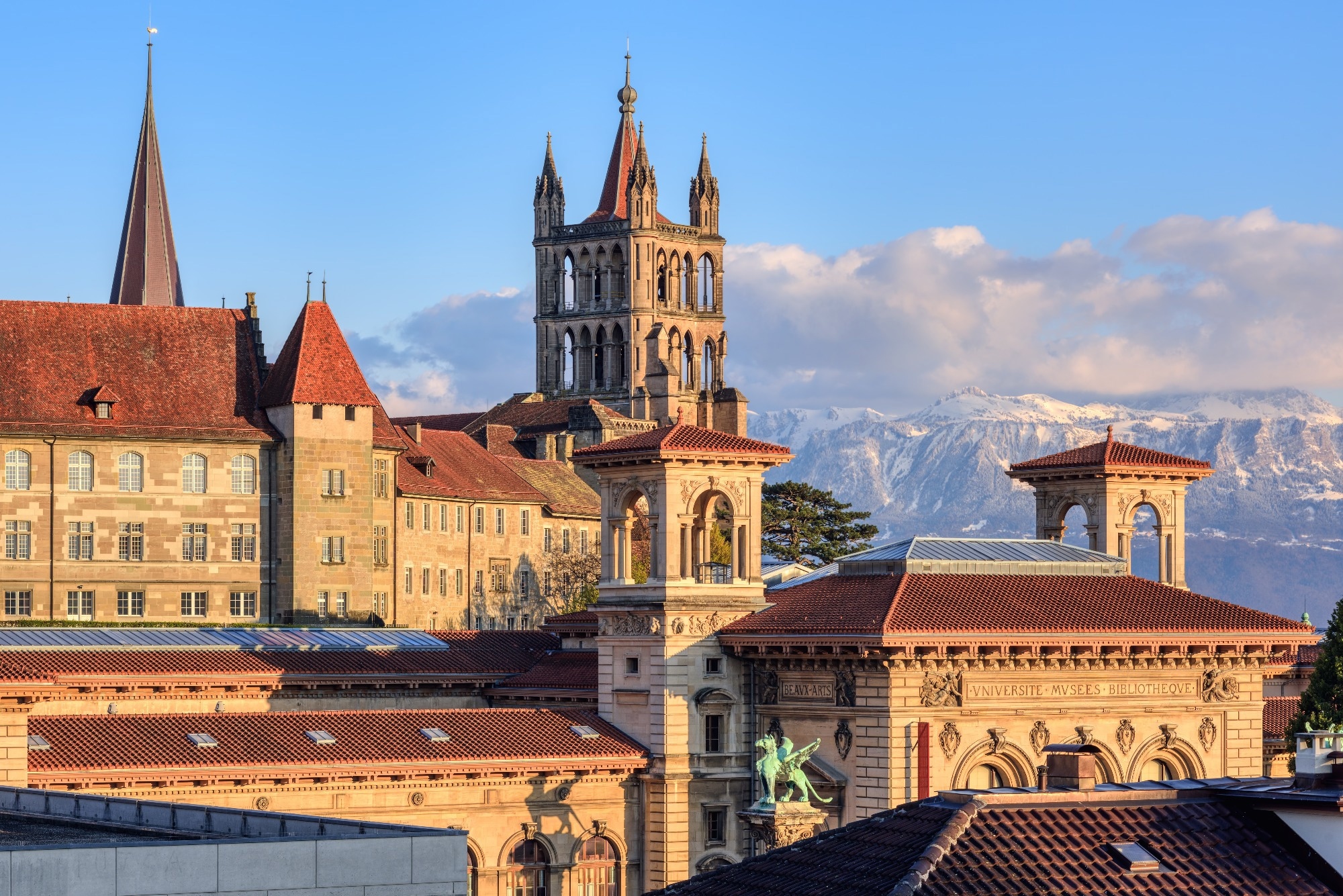Using holographic overlays, climate sensors, and AI-driven models, ETH researchers are revolutionizing how experts diagnose, preserve, and explain the fragile Gothic fabric of Switzerland’s largest cathedral.

750 years and digital change: For 750 years, Lausanne Cathedral has stood as an architectural masterpiece. ETH researchers have now developed digital tools to help with the building's restoration and support interdisciplinary collaboration.. Image Credit: Boris Stroujko / Shutterstock
The Notre-Dame Cathedral in Lausanne, built between 1170 and 1235, is the largest Gothic church in Switzerland. Over centuries, it has undergone multiple modifications and restorations. Its nearly 80-metre lantern tower alone has been redesigned several times, most recently during the extensive 19th-century restoration. The sandstone used throughout the Swiss plateau is highly vulnerable to water-driven degradation, including freezing, swelling, and pollution-related decay. Effective conservation, therefore, requires continuous monitoring and refined water-management strategies.
Extended Reality as a Conservation Tool
Researchers at ETH Zurich have demonstrated how extended reality (XR) and artificial intelligence can support conservation workflows. This work emerges from the “Heritage++” project at the ETH Institute for Building Materials, led by Professor Robert Flatt and associated with the Design++ Center. The project focuses on spatial computing and XR-based assistance for teams working on historic structures.
The primary outcome is an immersive “co-pilot,” a virtual assistant overlaying holographic information on the physical building when viewed through an XR headset or tablet. According to Flatt, XR technologies improve interdisciplinary collaboration by enabling specialists in architecture, materials science, history, and conservation to interact directly with structural and material data at the monument.
In a recent publication in the International Journal of Architectural Heritage, researchers showed how structural analysis can be augmented through XR to support decision-making and knowledge dissemination. Postdoctoral researcher Ricardo Maia Avelino highlights that XR enables experts and the public to explore how the building behaves structurally, ensuring that safety considerations inform future interventions.
Building a Digital Twin of Lausanne Cathedral
The digital co-pilot was developed in two stages. First, researchers created a detailed 3D model using laser scanning and photogrammetry from survey data. Next, each stone element was annotated with its age, mineral composition, and degradation state. This multimodal mapping allows teams to trace when stones were installed, their geological origin, and current damage levels. The dataset, developed with input from University of Lausanne geologists, is being expanded to cover the entire monument.
On-site users equipped with tablets or XR headsets can view these enriched sections of the cathedral, accessing overlays that specify material characteristics and deterioration. Doctoral researcher Yamini Patankar explains that the co-pilot provides instant condition assessments, helping conservators identify weak points and select appropriate interventions.
Climate-Resilient Conservation Strategies
The guiding principle in heritage restoration is to preserve as much of the original fabric as possible. To achieve this, ETH Zurich scientists are studying the moisture-driven mechanisms that damage the cathedral’s clay-rich sandstone. Wind-driven rain, particularly extreme wetting events followed by rapid drying, appears central to long-term degradation. These exposures are highly localized and challenging to manage architecturally.
Researchers have installed sensors around the cathedral to measure wind-driven rain, microclimate conditions, and internal moisture movements. In parallel, they are developing a model that links local exposure patterns to observed damage. This tool aims to forecast future deterioration under changing climatic conditions, especially the frequency and intensity of extreme weather events. Such insights will support tailored, climate-resilient restoration and enhance the durability of conservation measures.
Extending the Approach to Other Heritage Sites
While digital tools such as 3D models and Heritage Building Information Modelling already exist, “Heritage++” advances the field by integrating multidisciplinary datasets and embedding practical conservation expertise. The co-pilot developed for Lausanne Cathedral could be applied to other sandstone monuments - including bridges, castles, and monasteries - and eventually to structures built with different materials.
Christophe Amsler, architect for Lausanne Cathedral, notes that digital technologies will become essential components of conservation practice. He emphasizes that technology must support preservation while remaining faithful to the monument’s historical and cultural significance.
A Public XR App for the Cathedral’s 750th Anniversary
For the 750th Anniversary of the cathedral in October, ETH researchers developed a public XR app: a guided experience explaining ongoing conservation activities. Visitors can use their smartphones or tablets to explore historical information, expert insights, and augmented-reality views of material weathering and restoration work.
The app draws from extensive literature and expert video recordings, which are spatially aligned with the cathedral’s digital twin. Doctoral student Camilla Tennenini notes that the app brings conservation science directly to the public, both indoors and outdoors.
Looking ahead, the co-pilot will be expanded with a large language model capable of extracting insights from technical documents and video archives. This will support conservators on-site and eventually allow visitors to ask questions about the cathedral’s restoration in real time.
Source:
Journal references:
- Maia Avelino, R., Yang, W., Weichbrodt, A., Ochsendorf, J., & Flatt, R. J. (2025). Augmented Reality for Structural Inspection of Historic Monuments: The Case of Lausanne Cathedral. International Journal of Architectural Heritage, 1–16. DOI: 10.1080/15583058.2025.2578318, https://www.tandfonline.com/doi/full/10.1080/15583058.2025.2578318
- Patankar Y, Tennenini C, Bischof R, Khatri I, Avelino RM, Yang W, Mahamaliyev N, Scotto F, Mitterberger D, Bickel B, Girardet F, Amsler C, Bomou B, Flatt RJ: Heritage ++, a Spatial Computing approach to Heritage Conservation. RILEM Technical Letters 9 (2024), pp. 50–60. DOI: 10.21809/rilemtechlett.2024.202, https://letters.rilem.net/index.php/rilem/article/view/202